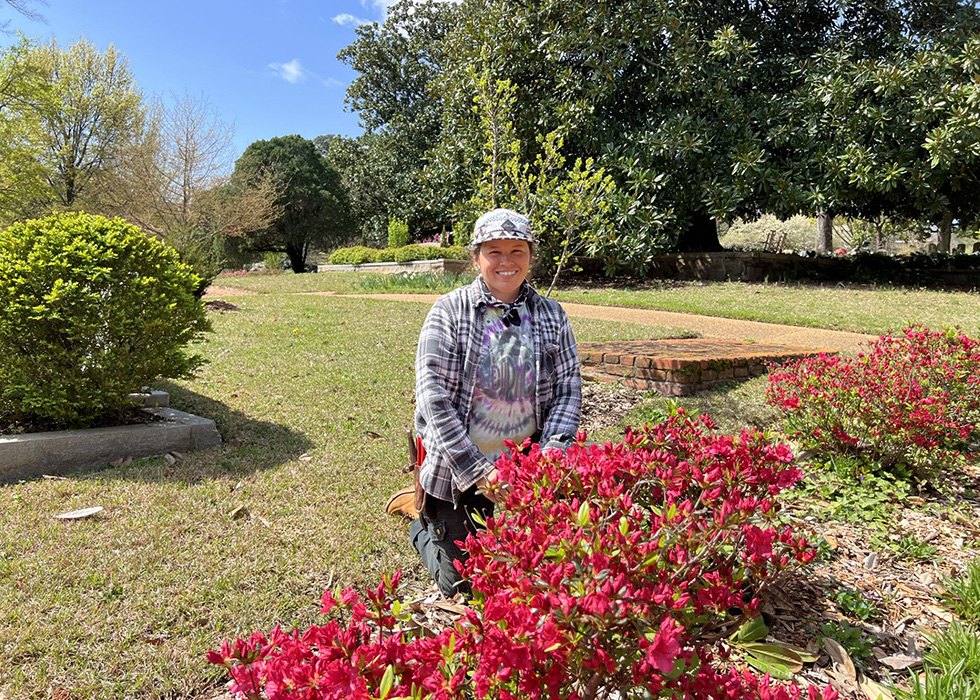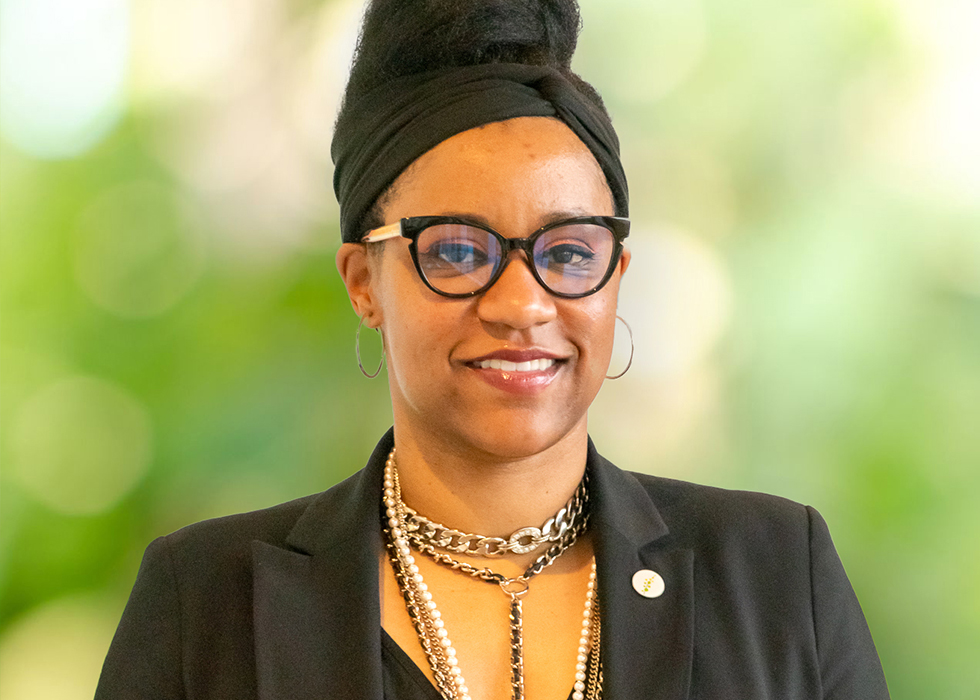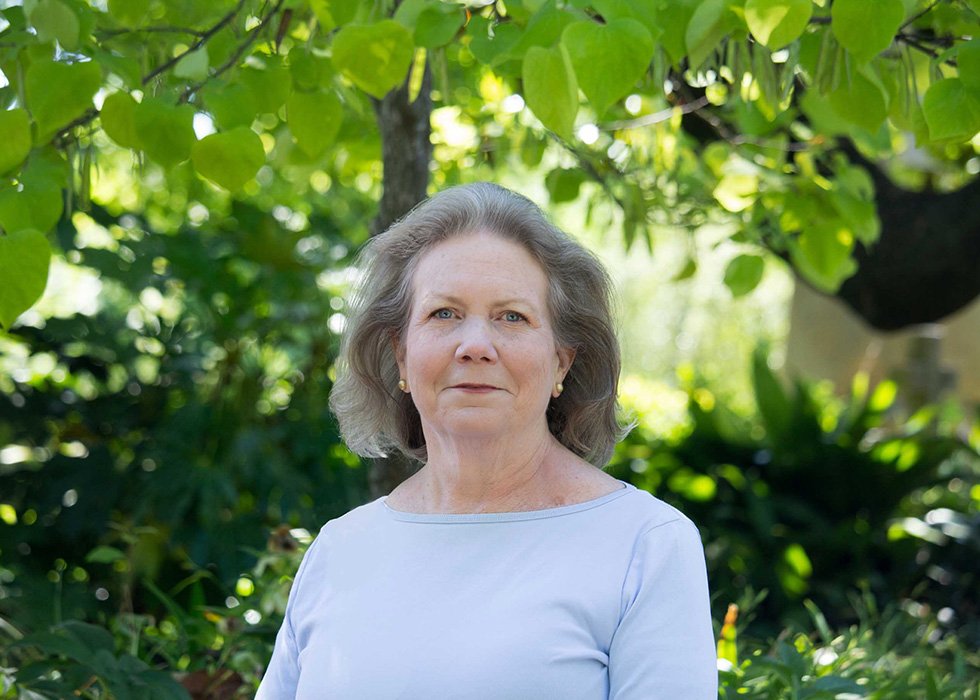
Explore the Daffodils of Oakland
Each February and March, thousands of daffodil blooms create a cheery scene at Oakland.
More than 70 varieties of daffodils make their appearance throughout Oakland’s grounds in the first months of each year. We invite you to take a stroll and see how many species you can spot with our self-guided map.
Just download and follow the suggested route to the shaded areas of the map to view some of our most dazzling displays. Signage in these areas (marked with the daffodil icon below) will share a few of the origin stories behind Oakland’s beautiful and historic bulbs.
Palmour House Collection
The willowy trumpet of Wordsworth’s poem that graces this area of the grounds originally came from The Palmour House in Dawsonville, Ga. They were rescued by Georgia Daffodil Society members in 2007 before development struck. Dr. Palmour was the first dentist in town. He built a home for his new bride in 1895, and presumably the daffodils were planted not long after. These early N. pseudonarcissus trumpets bloom across the Piedmont South. They are one of the early harbingers of spring and mark old homesteads in rolling fields.
Captain John W. Lipscomb Jr. Collection
These daffodils were donated to Oakland in 2015 by the daughter of Captain John W. Lipscomb Jr..
One of the earliest champions of historic daffodils, John began rescuing heirloom daffodils from old homesites around North Alpharetta in the 1970s. He tried hundreds of daffodils in his pasture to determine which would grow best in Georgia, and his work continues to be the underpinning of recommended flowers for gardeners by the Georgia Daffodil Society.
The “jonquil border” of this lot shows how families traditionally planted jonquils at Oakland. These flowers are a mix of rescued heirloom jonquils N. x Odorus or “Campernelle jonquils” and later blooming modern jonquils that thrived in John’s pasture: ‘Sailboat’ and ‘Trevithian.
Ellenwood Farm Collection
These daffodils were once planted in a broad swath along an abandoned 1890s farmstead in the Ellenwood area. Daffodil cultivars rescued were the trumpet ‘Golden Spur’, the double ‘Telamonius Plenus’ and the late-season N. x medioluteus now commonly called “Twin Sisters.”
Discovered on an old Dutch estate around 1888, ‘Golden Spur’ is now scarcely found in large plantings around the South. Its rarity has made it an important flower to rescue and protect from looming development.
‘Telamonius Plenus’ made its first appearance in American gardens during the Colonial era and has been a Southern stalwart daffodil since the 1820s. It is widely found in old gardens.
Mrs. Theo Sinkler Collection
Passionate about historic daffodils, Theo Sinkler embarked on a decades’ long effort to rescue bulbs from old farms and homesites in the Redan, Ga. area. Her double daffodils grace the lots south of the main gate.
Her large collection of heirloom Campernelle Jonquils were specifically donated to Oakland Cemetery. This donation returned long-favorite jonquils to the African American section, where they, and the willowy trumpet N. pseudonarcissus, were the daffodils of choice by family members. A number of family lots were originally fringed with these jonquils and trumpets dating to the 1910s and 1920s.
Edgewood Collection
Daffodils in this area were rescued from the nearby Edgewood neighborhood. Along with some old standbys like the double ‘Telamonius Plenus’ and trumpet N. pseudonarcissus were two favorite bicolor flowers – ‘Sir Watkin’ and ‘Conspicuus’.
‘Sir Watkin’ was originally found in Wales during 1884 and quickly became popular due to its size. Its large flower and robust constitution made it an American favorite from the late 1890s until World War II.
Looking more like a standard daffodil, ‘Conspicuus’ was one of the early hybrids, taking daffodils from their “wildflower” roots to the modern garden flower we know today.
Hastings Farm Collection
The later season white daffodils in this area were rescued from the Hastings family farm near Lovejoy, Ga. by Georgia Daffodil Society members in 2011. The Hastings family, well recognized Atlanta nursery owners, established a daffodil trial bed in the early 1920s to determine what varieties to sell. The daffodil beds survived at the family farm after its sale in the 1990s. Eventually the land was planted with pine trees, resulting in most of the bulbs being lost to shade. With development pending, rescuers painstakingly dug the remaining daffodils. After four years, the strongest bulbs began to bloom. Now these tough survivors ‘Queen of the North’, ‘Aspasia’ and “Twin Sisters” happily bloom in Oakland’s sun.




